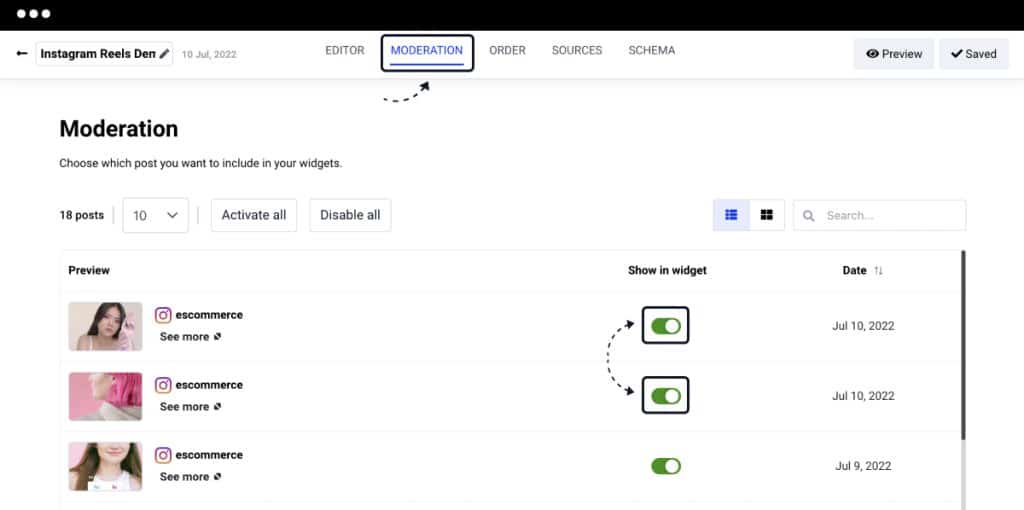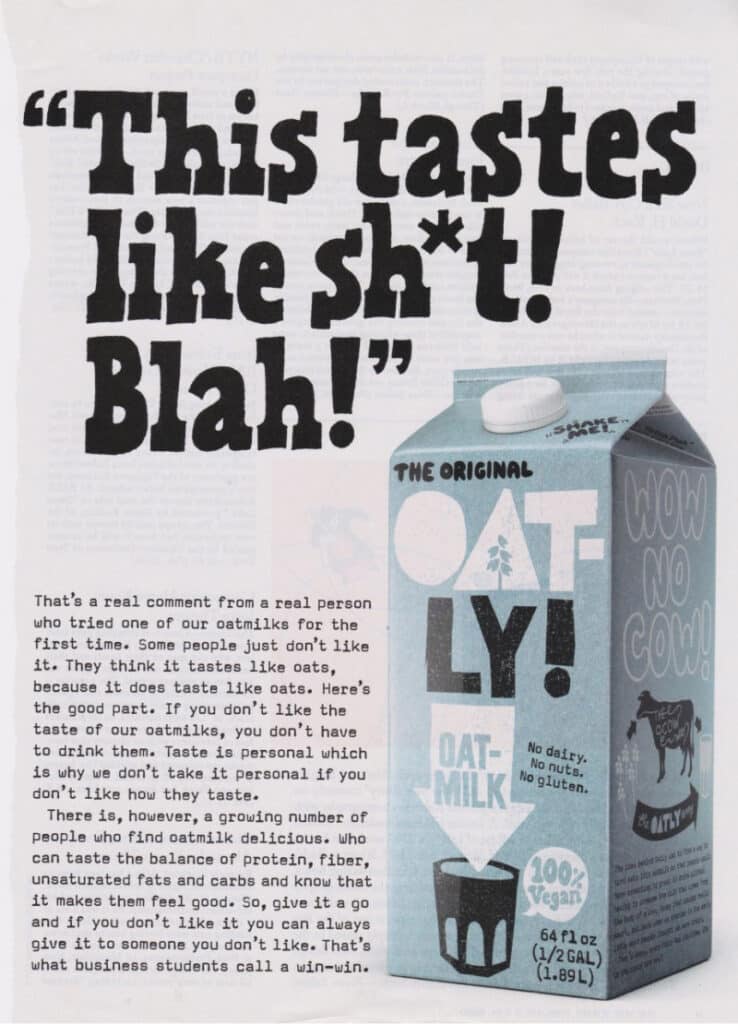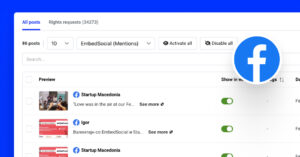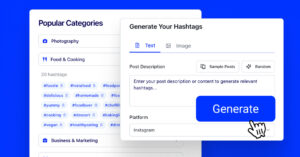In a world dominated by social media and digital platforms, UGC marketing harnesses the power of everyday individuals to create and share content that promotes brands, products, and services.
If you’re curious to discover the latest UGC marketing strategies, read on to explore the innovative techniques that are shaping this dynamic field.
What Is UGC Marketing?

UGC marketing, also known as User-Generated Content marketing, is an approach that involves customers to promote a brand, product, or service.
It is based on the idea that everyday individuals can play an active role in shaping a brand’s narrative and influencing purchasing decisions of others through their authentic experiences and content.
In UGC marketing, customers are encouraged to generate and share various forms of content, such as reviews, testimonials, photos, video content, social media posts, blog articles, and more.
These user-generated content examples showcase their interactions with a brand and its offerings, highlighting their opinions, experiences, and creativity.
Furthermore, UGC marketing holds immense value for businesses. It helps to build trust and credibility, as consumers often perceive user-generated content as more authentic and relatable than traditional advertising.
FYI: You can embed user-generated content on your website automatically. Sign up now.

Generate social proof & user-generated content automatically
#1 UGC platform to automatically generate, save, analyze, and display UGC on your website.
User-Generated Content Marketing Benefits For Brands

UGC marketing campaigns offer several benefits for businesses.
Here are some of the key advantages:
Authenticity
User-generated content is seen as more authentic and trustworthy by consumers valuable user-generated content. It is because user-generated content is created by real people with genuine experiences with a brand, product, or service.
This authenticity helps to build brand awareness and credibility and fosters trust among potential customers.
Increased engagement
UGC encourages active participation from customers, which leads to more valuable user-generated content and acts and to increased engagement.
When users are involved in content creation, they become more invested in the brand, resulting in higher levels of interaction, comments, likes, and shares. This engagement boosts brand visibility and creates a sense of community around the brand.
Amplified reach
User-generated content has the potential to reach a broader audience. Users sharing their user-generated videos and content on various social media platforms or other channels expose the brand to new audiences and extend its reach beyond traditional marketing efforts.
UGC are user-generated videos that can go viral and generate significant exposure for a brand.
Cost-effectiveness
UGC can be a cost-effective marketing strategy. Instead of investing in producing all the content themselves, businesses can take advantage of their users to create social proof examples for them.
This reduces the costs associated with content creation and allows businesses to allocate their marketing budgets more efficiently.
Diverse perspectives
User-generated content provides diverse perspectives and experiences related to a brand. This variety of consumer-generated content also helps to showcase different use cases, applications, and benefits of a product or service to other consumers.
It broadens the range of stories that can be told about the brand and appeals to a wider audience.
Emotional connection
UGC has the power to evoke emotional responses from consumers. When customers see others like themselves using and benefiting from a product or service, it creates a relatable and emotional connection. This emotional resonance can lead to increased brand loyalty and advocacy.
Market research and insights
User-generated content can provide valuable insights into customer preferences, needs, and behaviors. By analyzing UGC, businesses can better understand their target audience, identify trends, and refine their marketing strategies.
Overall, a UGC strategy in marketing harnesses the power of user-generated content to enhance brand credibility, engagement, reach, and cost-effectiveness. By tapping into the voices and experiences of their most loyal customers, businesses can build stronger connections and drive meaningful results.
10 UGC Marketing Strategies & Tips
Several effective approaches and tips exist when implementing and creating a UGC marketing campaign and marketing strategies. Here are some strategies and tips for successful UGC marketing campaigns:
Encourage User Participation
Actively encourage your customers to create and share their own content on social platforms by offering incentives, rewards, or recognition. This could include running contests, giveaways, or loyalty programs that motivate users to contribute their own content.
However, keep in mind that the so-called Influencer marketing cost can vary. For example, nano influencers may earn between $150 and $600 per sponsored post.
Make Use of Social Media Platforms
Use popular social media networks where user-generated content thrives. Create branded hashtags on Instagram or other platforms to facilitate content discovery and encourage to tag their posts with your branded hashtag hashtags.
Engage with and share user-generated content on your brand’s Facebook page and social media channels to amplify your user-generated content strategy and its reach.
Showcase User-Generated Content on Your Website
Create dedicated sections on your website to showcase user-generated content examples. This could include customer testimonials, online reviews, or visuals and share content such as photos or videos. Displaying your UGC content prominently on your site enhances credibility and encourages others to contribute.
Collaborate with Influential Users
Identify influential UGC creators and collaborate with them to co-create content. This could involve partnerships, sponsored campaigns, or exclusive events.
Working with influential users can extend the reach of your own UGC strategy or marketing campaign and enhance brand visibility.
Engage and Respond to User-Generated Content
Actively engage with other consumers and social media users who create and share content about your brand. Like, comment, and share their content to show appreciation and build a sense of community. Respond to user-generated reviews, comments, and messages promptly and thoughtfully.
Curate and Moderate User-Generated Content

Implement moderation and curation strategies to ensure that authentic user-generated content you-generated content aligns with your brand’s values and guidelines. Curate the best UGC and feature it prominently to build brand awareness, inspire others and maintain quality standards for consumer-generated content.
User-Generated Reviews and Testimonials

Include user-generated reviews and testimonials on your product pages or marketing materials. Positive online reviews can significantly impact buying choices and build trust and brand advocates among potential and loyal customers.
If you need to find out more about positive reviews, make sure you read our article on the best positive review examples.
Facilitate User Storytelling
Encourage users to share their stories, experiences, or use cases related to your brand or products on your social media and social proof side. This narrative-driven content is compelling and fosters a deeper emotional connection with your brand-specific by your audience.
Monitor and Analyze UGC Performance
Regularly monitor and analyze the performance of user-generated content. Track metrics such as engagement, reach, conversion rates, and sentiment analysis to evaluate the effectiveness of your UGC marketing efforts and make data-driven optimizations.
Respect User Privacy and Rights
Always ensure that you have obtained proper permissions and rights to use user-generated content. Respect user privacy and follow ethical guidelines when utilizing your UGC marketing campaigns.
By implementing these strategies and following best practices, you can effectively harness the power of user-generated content to amplify your brand, engage your audience, increase conversions and build a thriving UGC marketing strategy.
10 Ways to Share User-Generated Content
User-generated content (UGC) is a great way to engage with your audience and boost the authenticity of your brand. It refers to any form of content – such as images, videos, text, or reviews – that has been posted by users on online platforms.
Here are ten ways you can share UGC content:
Social Media Features
Platforms like Instagram and Facebook offer features like stories, live videos, and community tabs, perfect places to share UGC. Instagram’s “Repost” function allows you to create UGC content on your own profile, giving credit to the original poster.
Twitter’s retweet and quote tweet features can also help spread UGC.
Website

You can dedicate a section of your website to showcase UGC. This could be in the form of a rotating gallery, a testimonial section, or a live social media feed. For eCommerce websites, incorporating UGC into product pages (like reviews or user photos) can effectively enhance product credibility and drive sales.
See more examples of UGC on websites >
Email Newsletters
Incorporating UGC into your email newsletters is a great way to keep your subscribers updated with community happenings. This can range from featuring customer reviews, photos of customers using your product, or highlighting interesting user comments.
Feedlink offers a social media newsletter that can make your Instagram posts in a newsletter.

Contests and Giveaways
These encourage more UGC and give you a great opportunity to share content.
For example, you could run a photo contest where users submit pictures of them using your product. The winning photo could be featured on your social media accounts, website, or newsletters.
UGC Campaigns
Encourage your audience to create content related to a specific campaign. For instance, you could ask your users to share their unique stories related to your brand or product using a specific hashtag. This UGC can then be shared across various social platforms.
See examples of UGC campaigns >
Influencer Partnerships

Partnering with influencers who resonate with your brand can encourage their followers to create and share content about your product or service.
The influencers can then share this and create UGC, on their own platforms, which allows your brand to reach a wider audience.
Community Forums or Boards
Online communities such as Reddit or Quora or your own branded community forum can be effective platforms for sharing and creating UGC. You can create specific threads or categories where users can post their content, which the community can then upvote based on its relevance and quality.
Interactive Live Events/Webinars
With the rise of online platforms such as Zoom or Microsoft Teams, you can hold live events or webinars where users can participate and share their thoughts, stories, or experiences in real time. During the event, you can feature user questions, comments, or insights and share them with the rest of the participants.
Post-event, a summary of user interactions can be shared on your website, posts, or newsletter. This promotes active participation from your users and provides a platform for them to engage with your brand directly.
Podcasts or Audio Platforms
You can invite your users to share their stories or experiences on a podcast or audio platform like Clubhouse. These platforms have become popular in recent years and can be an excellent way to share UGC. You can later promote these episodes through your other channels, ensuring wider reach and engagement.
Product Packaging
You could incorporate user-generated content in your product’s packaging design. For instance, you might run a competition asking users to come up with a design for your next product packaging.
Alternatively, you could include quotes or reviews from users on your packaging. This creates an innovative unboxing experience and celebrates and shares your community’s content in a tangible way.
Here is an interesting example of how Oatly even re-used and displayed a negative review on their packaging:

Getting Started With UGC Marketing: 8 Best Practices from Experts
Discover how successful CEOs, founders, and marketing managers leverage user-generated content in their marketing strategies. From embedding customer reviews on websites to inviting expert contributors for insights, we’ve compiled eight powerful UGC examples these industry leaders share.
- Embed Customer Reviews on the Website
- Leverage Review Sites for UGC
- Showcase Testimonials on Social Media
- Integrate Testimonials on Homepage
- Pet Wellness UGC in Social Media
- Leverage Expert Opinions for Content
- Share Customer Stories on Instagram
- Invite Expert Contributors for Insights
Embed Customer Reviews on Website
I’ve easily incorporated UGC into my marketing strategy by embedding customer reviews into our website. These snippets act as testimonials that help increase trust in our brand.
Rather than simply selecting a static assortment of top reviews, which makes it seem like we’re merely cherry-picking the best, we built a system that shows the most recent reviews. This tactic proves to potential customers that our quality is consistent and that most of our reviews are positive, incentivizing them to buy.
Example of customer reviews webpage >
Michael Alexis, CEO, teambuilding.com
Leverage Review Sites for UGC
Reviews are the ultimate user-generated content. We use review sites such as G2.com to capture reviews. Many people allow us to share their reviews on our website, and we take advantage of this.
You can see an example here: Learn why clients love us. – Handwrytten
David Wachs, Founder and CEO, Handwrytten
Showcase Testimonials on Social Media
In our social media posts, we showcase positive testimonials from our customers to show the meaningful aspects of what we do in providing affordable, quality dental care along with excellent customer service.
These posts help us to build credibility, and they give people a good preview of what it would be like to become customers.
Here is an example: https://www.instagram.com/p/CdehtsVq5ff/
Miles Beckett, Co-founder and CEO, Flossy
Integrate Testimonials on Homepage
We integrated testimonials from our clients directly onto our homepage (Code Galaxy ) and the results were astounding. After 2,349 sessions, an A/B test revealed a 19% higher conversion rate. Analyzing user sessions, we found that the testimonial block is a hotspot on our page’s heatmap, solidifying its effectiveness.
Testimonials, in my experience, are the most authentic and persuasive type of user-generated content. They bring out the real voices of our satisfied customers, helping potential clients relate more closely to our services. Encouraged by these results, we are considering experimenting with video testimonials, further bridging the gap between our brand and users.
Marliis Reinkort, CEO, Code Galaxy
Pet Wellness UGC in Social Media
It’s a big part of our social media. As a pet wellness regimen, we know how important our customers’ furry family members are to them. That’s why we love incorporating UGC into our social media, to show how real dogs benefit from our products. In addition to helping showcase our products, UGC is also a valuable way to supplement our social media posts.
An example: https://www.instagram.com/p/CrgVDiEJfsW/?hl=en
Josh Weiss, Founder and CEO, Reggie
Leverage Expert Opinions for Content
We created a free Google Tag Manager (GTM) tool for which we wanted to gain awareness. I thought UGC would be an excellent way of creating content about it quickly and easily.
So I posted on LinkedIn and contacted some GTM experts. The great thing about UGC is that people love being ‘experts,’ so the content comes in quickly.
I selected the best suggestions, edited and fact-checked them, and finally placed our GTM tool in position number 1.
Afterward, I created LinkedIn posts that tagged all the other companies whose software was featured in our list AND all the experts who contributed to the article. Everyone was very grateful to be a part of it and shared it with their networks, generating thousands of impressions.
I ended up with:
Will Rice, SEO and Marketing Manager, MeasureMinds
- An article that practically wrote itself, ranking in position 1 or 2 for its target keyword.
- Thousands of social impressions for our new tool.
- Numerous new professional relationships for future collaborations.
Share Customer Stories on Instagram
For Mother’s Day this year, we did a customer spotlight post on Instagram for a remarkable woman named Julie. The photo post included quotes from Julie that helped illustrate her story and struggle living with severe menopause symptoms.
Telling a story that organically integrated our product’s value into the resolution was a natural fit—and we were overjoyed to have made such an impact on Julie’s quality of life! Ultimately, it’s Julie and women like her whom we want to help and support as they go through various journeys in life.
The post was well-received and drove above-average engagement, but more importantly, it lives on our social media account for more women to read about and relate to. UGC marketing can take on evergreen value when the story you’re telling and your product align just right.
Michael Green, Co-founder, Winona
Invite Expert Contributors for Insights
One way we’ve embraced user-generated content in our marketing strategy is through our contributors category. We’ve established a space where experts in tech verticals like fintech, cleantech, and more can share their valuable insights.
In exchange for their contributions, we provide a do-follow link to their company, boosting their online presence. This approach not only fosters collaboration but also enriches our content with diverse perspectives.
To experience an example of this user-generated content, check out our contributors category: Contributions Archives – Tech News 180.
Marco Genaro Palma, Co-founder, TechNews180
Content Created with UGC vs Brand Content
User-Generated Content (UGC) and Brand Content have distinct characteristics and serve different roles in marketing and content strategy. Here is the main difference between the two:
User-Generated Content (UGC) is created by individuals not professionally affiliated with the brand. On the other hand, brand content is content that’s created by a brand or on behalf of a brand by professionals.
It’s carefully designed to convey the brand’s message, promote its products or services, or enhance its image. Brand content is typically more polished and curated and adheres strictly to the brand’s guidelines and marketing campaigns. Examples include advertisements, official social media posts, blog articles on the brand’s website, promotional videos, and more.
So, the main difference lies in the source and intent of the content. UGC is authentic and often spontaneous by users, while brand content is professionally crafted and strategically designed by or for the brand.
Is User-Generated Content Important in Marketing Campaigns?
In conclusion, UGC’s marketing strategy offers businesses a powerful way to connect with their audience.
By using social proof and taking full advantage of authentic video content their customers create, brands can enhance credibility, increase engagement, increase conversions, and expand their brand reputation reach.
FYI: You can embed user-generated content on your website automatically. Sign up now.






